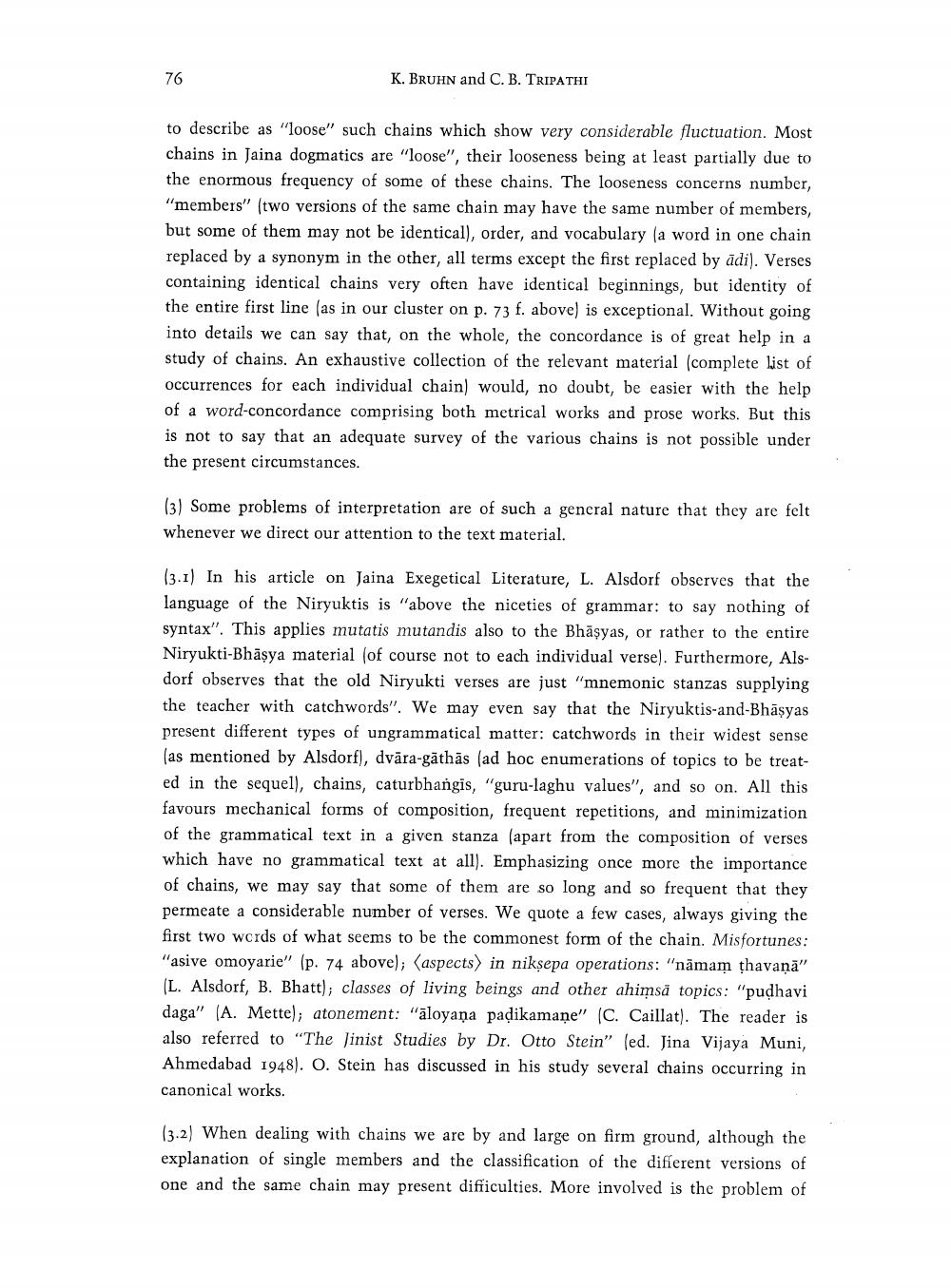Book Title: Jaina Concordance And Bhasya Concordance Author(s): K Bruhn, C B Tripathi Publisher: K Bruhn, C B Tripathi View full book textPage 9
________________ K. BRUHN and C. B. TRIPATHI to describe as "loose" such chains which show very considerable fluctuation. Most chains in Jaina dogmatics are "loose", their looseness being at least partially due to the enormous frequency of some of these chains. The looseness concerns number, "members" (two versions of the same chain may have the same number of members, but some of them may not be identical), order, and vocabulary (a word in one chain replaced by a synonym in the other, all terms except the first replaced by ādi). Verses containing identical chains very often have identical beginnings, but identity of the entire first line (as in our cluster on p. 73 f. above) is exceptional. Without going into details we can say that, on the whole, the concordance is of great help in a study of chains. An exhaustive collection of the relevant material (complete list of occurrences for each individual chain) would, no doubt, be easier with the help of a word-concordance comprising both metrical works and prose works. But this is not to say that an adequate survey of the various chains is not possible under the present circumstances. (3) Some problems of interpretation are of such a general nature that they are felt whenever we direct our attention to the text material. 13.1) In his article on Jaina Exegetical Literature, L. Alsdorf observes that the language of the Niryuktis is "above the niceties of grammar: to say nothing of syntax". This applies mutatis mutandis also to the Bhāşyas, or rather to the entire Niryukti-Bhāşya material (of course not to each individual verse). Furthermore, Alsdorf observes that the old Niryukti verses are just "mnemonic stanzas supplying the teacher with catchwords". We may even say that the Niryuktis-and-Bhāşyas present different types of ungrammatical matter: catchwords in their widest sense (as mentioned by Alsdorf), dvāra-gāthās (ad hoc enumerations of topics to be treated in the sequel), chains, caturbhangis, "guru-laghu values", and so on. All this favours mechanical forms of composition, frequent repetitions, and minimization of the grammatical text in a given stanza (apart from the composition of verses which have no grammatical text at all). Emphasizing once more the importance of chains, we may say that some of them are so long and so frequent that they permeate a considerable number of verses. We quote a few cases, always giving the first two words of what seems to be the commonest form of the chain. Misfortunes: "asive omoyarie" (p. 74 above); (aspects) in niksepa operations: "nāmam thavaņā" (L. Alsdorf, B. Bhatt); classes of living beings and other ahimsā topics: "pudhavi daga" (A. Mette); atonement: "āloyaņa paạikamaņe" (C. Caillat). The reader is also referred to "The Jinist Studies by Dr. Otto Stein" (ed. Jina Vijaya Muni, Ahmedabad 1948). O. Stein has discussed in his study several chains occurring in canonical works. (3.2) When dealing with chains we are by and large on firm ground, although the explanation of single members and the classification of the different versions of one and the same chain may present difficulties. More involved is the problem ofPage Navigation
1 ... 7 8 9 10 11 12 13
